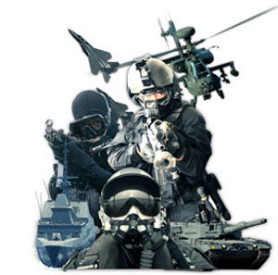CYBERPIONEER - BUILDING BLOCKS OF 3RD GENERATION SAF (JUL 09)
PHOTO // PIONEER Photographers
The Singapore Armed Forces (SAF) embarked on its 3rd Generation journey in 2004. Five years on, Deputy Prime Minister and Minister for Defence Teo Chee Hean gives an assessment of where the SAF stands in its transformation process.
In celebration of SAF Day on 1 Jul, Mr Teo highlighted the key building blocks of the 3rd Generation SAF in an interview he gave to local media.
When the SAF started its 3rd Generation transformation in 2004, it was poised to become a leaner and more potent fighting force that would use technology as leverage to deal with threats. More importantly, it understood that the quality of its people would be essential to transforming the dream into a reality.
Today, the key building blocks of this SAF are in place, said Mr Teo, who elaborated that the SAF is now a modernised, networked force, capable of carrying out a wider spectrum of operations, and manned by committed people.
Connect and conquer
Commenting on the SAF's evolution into a modernised force, he cited the examples of its upgrading of second-hand equipment, such as the recently launched RSS Archer submarine, and the replacement of its E2-C early warning aircraft and SM1 armoured tanks with G550-AEW aircraft and Leopard 2A4 tanks respectively.
Other recent additions to the SAF's arsenal include the Formidable-class stealth frigates, the Hermes 450 Unmanned Aerial Vehicles (UAVs) and the Republic of Singapore Air Force's (RSAF's) F-15SG fighters.
The SAF's edge lies in the networked capabilities of these machines, which provide more speed, precision, mobility and combat power.
"They are able to exchange information with one another and...call upon the total capabilities of the SAF," said Mr Teo, who witnessed UAVs, artillery systems, Apache helicopters and F-16s operating as one integrated force during Exercise Wallaby in Australia last year.
Doing more, going further
Complemented by such hardware, the SAF can carry out a wider spectrum of operations, including contributing to regional and international peace and stability.
Most recently, the SAF has deployed a Landing Ship Tank to the Gulf of Aden to aid anti-piracy efforts, and a medical team to Oruzgan Province in Afghanistan.
In the coming months, a paediatric and women's wing will be constructed for a hospital in Bamiyan Province in Afghanistan.
Describing such deployments as challenging operations, Mr Teo shared about how car bombs and rocket attacks were commonplace in Afghanistan.
"So (the deployments were) not without risks but we prepared our people well. It's been a good operational experience for our people," he added.
Mr Teo said the SAF will continue to maintain the engineering teams to help with construction work in Bamiyan. It is also prepared to make other useful contributions in Afghanistan, like UAVs for surveillance and a Weapon Locating Radar to help provide early warning against rocket attacks.
Added flexibility and scope
Re-organisation within the SAF has helped to widen its scope of operations. An example is the revamp of the RSAF from a geographically based structure to five distinct commands in 2007, including a UAV Command which "reflects the new generation SAF, the abilities we have and the operations we expect the 3rd Generation SAF to undertake", said Mr Teo.
In operations, the SAF has undertaken a multi-Service and multi-agency approach, with the formation of the Island Defence Headquarters in 2001 and Maritime Security Task Force in January this year.
Most recently, in July, the SAF unveiled a Special Operations Task Force, comprising all the special operations forces in the SAF, "so that they can work together much more cohesively...and much more effectively", Mr Teo said.
Preparing the people
As the SAF transforms, committed people capable of handling the SAF's current and future capabilities and operations are needed. This puts an emphasis on people development.
The rising importance of small unit leaders, coinciding with more well-educated and able young people serving National Service, "enables us to give them more meaningful things to do, and draw upon their capabilities to build a much more capable SAF", said Mr Teo.
To meet the demands of the 3rd Generation SAF, new human resource initiatives were rolled out in May. These included the extension of officers' retirement age from 45 to 50, more opportunities for the personal and professional development of warrant officers, and the introduction of a new 3rd Warrant Officer rank.
Besides fulfilling the desire of some officers to stay longer in the SAF, such initiatives also recognise "the capabilities of the type of people that we want to take in for the Warrant Officers Corps to be the backbone of the SAF", shared Mr Teo.
In addition, the introduction of a Military Domain Experts Scheme then reflects the SAF's need for deep competencies in specific areas such as engineering, technical and intelligence. Acknowledging that the SAF still has some way to go before its transformation is complete, Mr Teo concluded: "It's not finished yet... but you can now see the shape of this 3rd Generation SAF. There s still much work to be done over several more years."
Looking ahead, he said that the SAF will continue to look at new technologies and new capabilities "which allow us to do things better - more effectively, more efficiently, more cost-effectively".










